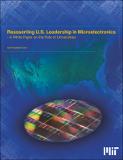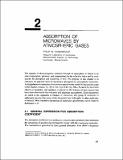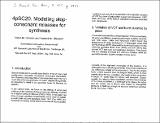Research Laboratory for Electronics (RLE)

The Research Laboratory of Electronics (RLE) at the Massachusetts Institute of Technology (MIT) was founded in 1946 as the Institute's first interdisciplinary laboratory. RLE is the successor to the famed MIT Radiation Laboratory of World War II, and was formed to bring together physicists and electrical engineers to work on fundamental and applied understanding of emerging topics related to electronics. Today, RLE continues to be a premier MIT research environment, providing a supportive framework for one of MIT's largest communities of faculty, staff, and student investigators. Over forty MIT professors affiliated with MIT's departments of Electrical Engineering and Computer Science, Physics, Mechanical Engineering, Materials Science and Engineering, Aeronautics and Astronautics, the Biological Engineering Division, the Engineering Systems Division, and the Harvard-MIT Division of Health Sciences and Technology lead RLE's world-class research initiatives. Approximately 250 graduate students and 60 undergraduates from 11 MIT departments pursue research in RLE annually. RLE investigators pursue a broad and diverse interpretation electronics clustered around six primary themes: 1. circuits, systems, signals, and communications; 2. physical sciences; 3. quantum computation and communication; 4. nanostructures; 5. photonic materials, devices and systems; and 6. communication biophysics.
Sub-communities within this community
Collections in this community
Recent Submissions
-
Reasserting U.S. Leadership in Microelectronics - A White Paper on the Role of Universities
(Massachusetts Institute of Technology, 2021-09)The United States’ longstanding leadership in the realm of semiconductors and microelectronics is today under serious challenge. The solution: a concerted and ambitious national response that emphasizes manufacturing, ... -
Absorption of Microwaves by Atmospheric Gases
(John Wiley and Sons, 1993-01-01)The theory of absorption of microwave emission by common atmospheric gases is reviewed. -
Modeling stop-consonant releases for synthesis
(2011-07-27)This study is part of a project leading to rule-based speech synthesis using the HLsyn synthesizer. In HLsyn, stop-consonant releases are generated by controlling the time variation of a constriction that is formed by ...


